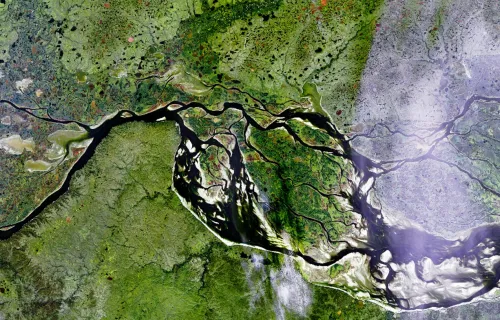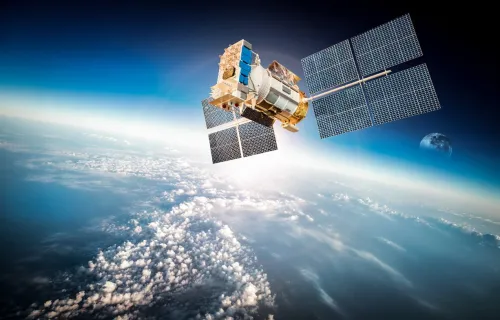Sustainability is not the first thing that springs to mind when you think about the benefits of using space-based technology in industry. But the reality is that it underpins sustainability solutions every day.
This is great news both in terms of reducing our impact on the planet and for industries that are facing increasing requirements from the public, stakeholders and legislation to operate more sustainably. Robust green credentials are increasingly important to those who consume products and services. And, across the globe, legislation is compelling industry to work differently. In the UK, for example, companies already report their GHG emissions, and, from April 2022, the largest companies and financial institutions will have to report on climate-related risks and opportunities, ensuring they consider climate change in their major decisions.
Supporting sustainability behind the scenes
When you look behind the scenes of space-based technology and data, it is heartening to see how supporting sustainability is such a strong thread running through the technology. Take Earth Observation (EO) technologies that monitor and assess the natural and manufactured environment. Although the primary purpose of this data might not be related to sustainability, in many cases, the data is proving to be critical to sustainability decision-making. And when we look at the growing role of satellite communications, we see a wide range of projects that are using the technology to promote sustainability goals.
Here are just three ways that space-based technology is driving sustainability and reducing the impact of human activity around the world:
1. Creating a greener approach to aviation with satellite communications
We are working with Inmarsat and ESA to develop Iris, a new secure satellite-based air–ground communication system for Air Traffic Management. Iris is part of the ‘Single European Sky’ (SESAR) vision and will use secure internet connectivity to relieve pressure on congested traditional radio links, which are near capacity.
However, the new satellite-based communications system will also bring significant sustainability advances. 4D trajectory management in European airspace will optimise routing, reduce the amount of time planes wait to land and minimise flight delays - providing €6bn in fuel savings and vitally cutting CO2 emissions by 18m tonnes every year.
2. Protecting the earth’s green lungs with EO technology
Our Forestry Thematic Exploitation Platform (F-TEP) delivered with our partner, VTT, uses Earth Observation data to support carbon sequestration as well as better forest management. F-TEP identifies areas of vulnerability, so forests can be well managed to continue to absorb up to a third of the CO2 released from burning fossil fuels every year.
Our Food Security Thematic Exploitation Platform (FS-TEP) delivered with partners including VISTA, does for food security what F-TEP does for trees, monitoring and focusing on the health and vulnerability of crops. It helps to balance the conflict between deforestation and the necessity to grow crops for human consumption – supporting smart farming initiatives that increase yields but decrease the use of chemicals.
3. Using EO data to revolutionise oil spill monitoring and management
A rapid response to an oil spill is critical to minimising the environmental impact and access to near-real-time satellite data is a pivotal part of informing critical decision-making. However, historic satellite imagery could be too slow, with operators having to wait for a single satellite to pass over the spot again.
Our Oil and Gas industry Earth Observation (OGEO) Response Platform is a service delivering relevant near-real-time satellite imagery. It is provided by a dedicated portal, where information relating to a specific spill incident is gathered and presented in a clear and systematic way. It provides access to satellite data products from a range of providers via an online portal. The scalability of the platform allows it to process large amounts of data in a spill event, including swath prediction, spill mapping, and the running of oil spill drift models to forecast the behaviour of the spill. This information can be used to decide on the best mitigation techniques to deploy.
Start using space data to drive your sustainability
With every advance in space-based technology we are also making advances in sustainability – and we are at the heart of these developments.
Working alongside organisations like European Space Agency (ESA), the European Organisation for the Exploitation of Meteorological Satellites (EUMETSAT) and the UK Space Agency (UKSA) we deliver secure, mission-critical space systems, including data processing, satellite communications, modelling and simulations to support industry. The technologies we create enable scientists to monitor the Essential Climate Variables (ECVs) that are used to understand the earth’s changing climate.
Read the brochure to find out more about how space-based technology and data can support your business towards a sustainable future, or get in touch to talk through your options.






